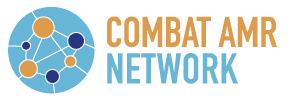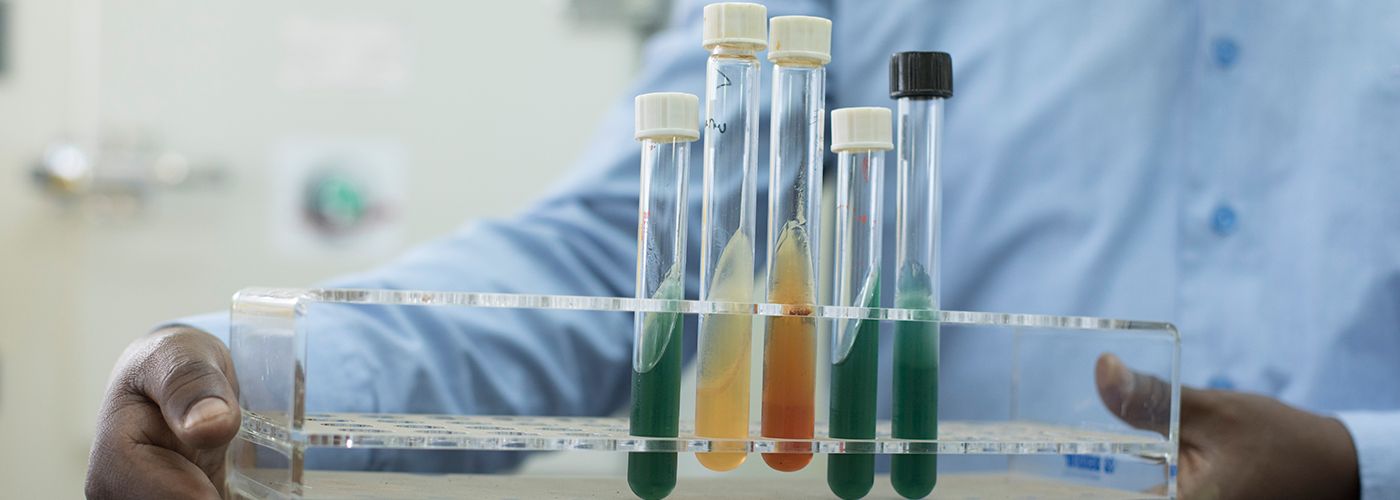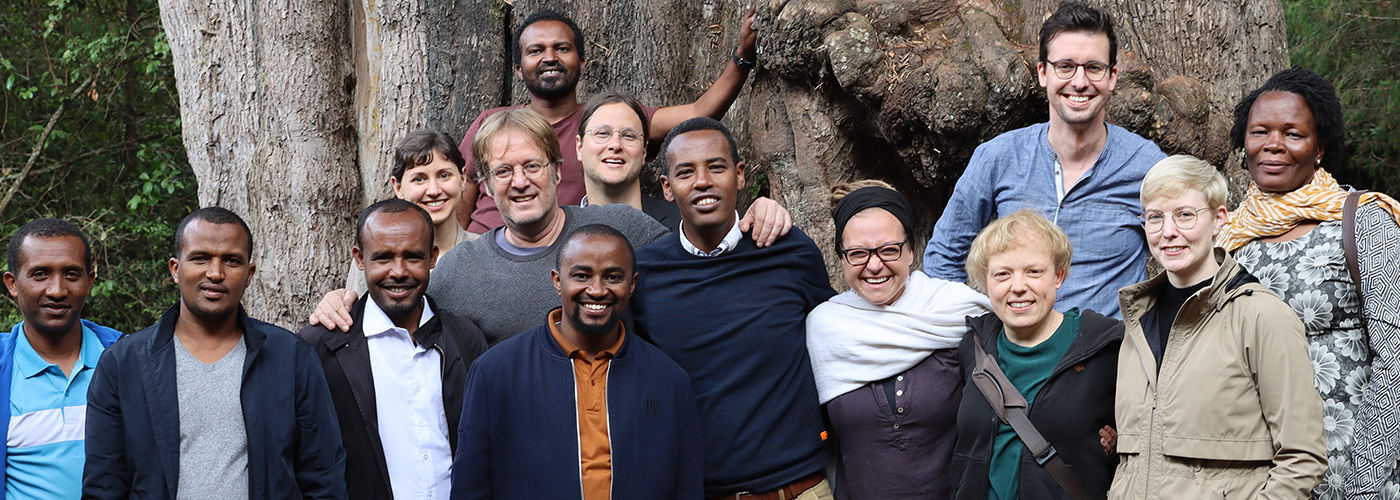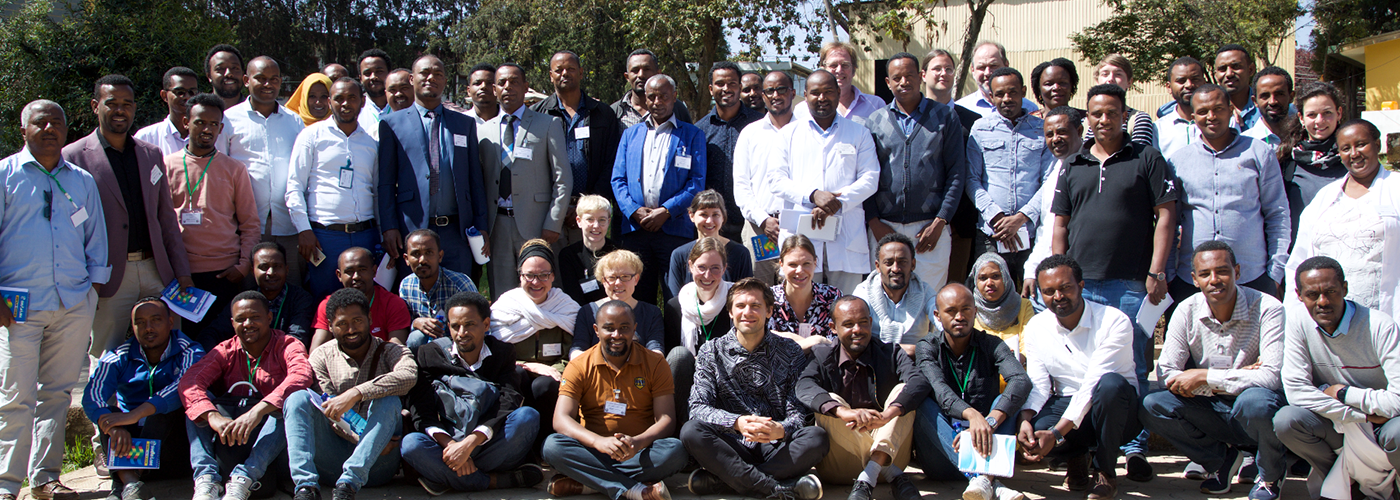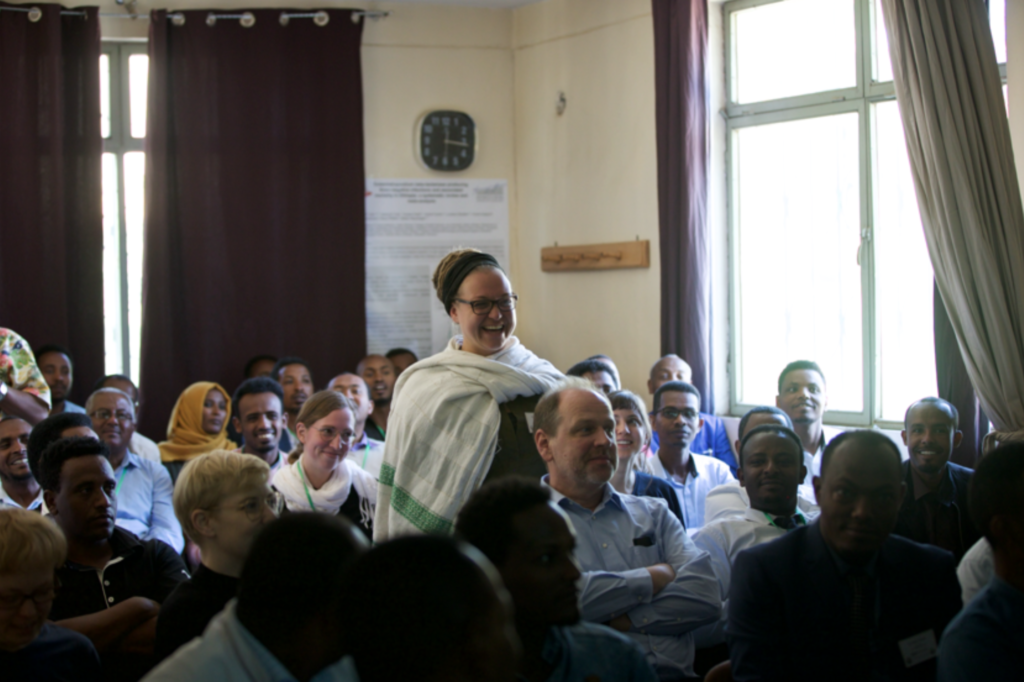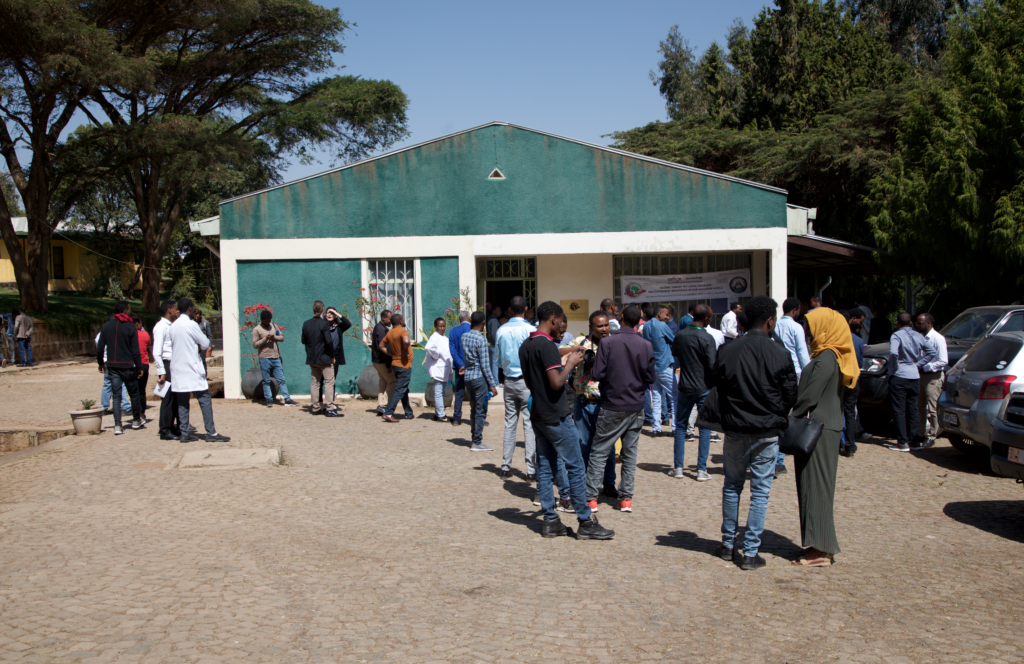In February 2020 we held our first international workshop of the COMBAT AMR in Africa Network titled "Global threat yet local problem - antimicrobial resistance in sub-Saharan Africa" at the Hirsch Institute of Tropical Medicine in Asella, Ethiopia.
AMR Workshop 2020 in Asella
In February 2020 we held our first international workshop of the COMBAT AMR in Africa Network titled “Global threat yet local problem – antimicrobial resistance in sub-Saharan Africa” at the Hirsch Institute of Tropical Medicine in Asella, Ethiopia.

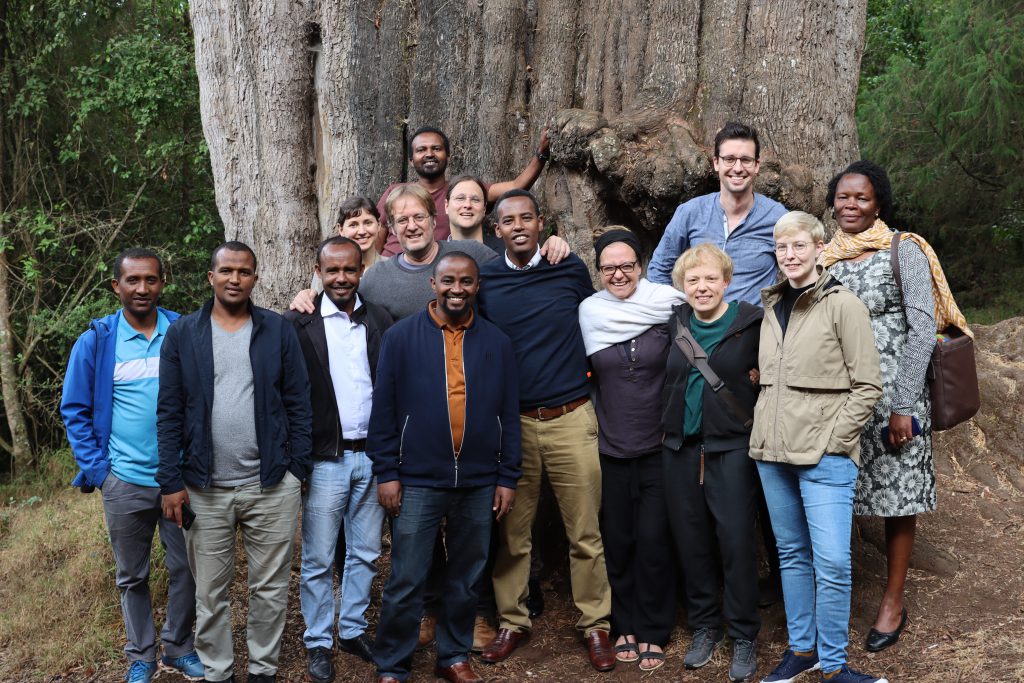
Workshop Files
Workshop Images
Workshop Summary
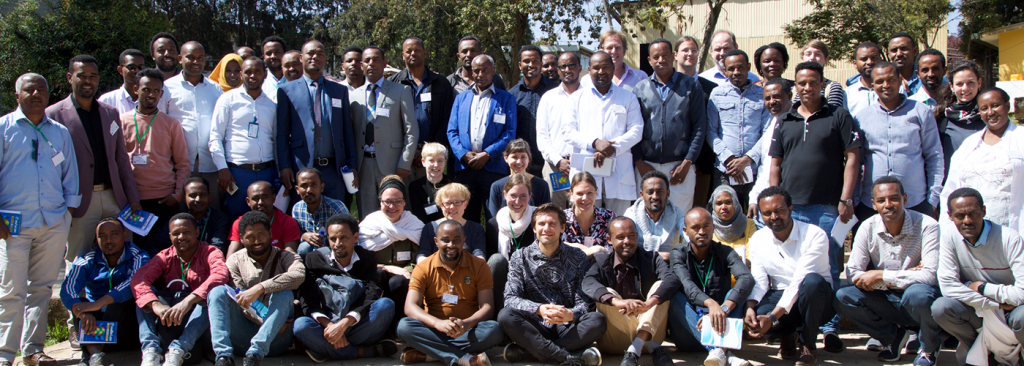
The workshop was opened by Dr. Duguma Adugna (President of the University), Mr. Merga Bayu (Dean of the College of Health Sciences) and the representative of Asella Teaching Hospital Dr. Nemo Ambo (Medical Director) together with the coordinators of the Hirsch Institute of Tropical Medicine (HITM), Marlen Schneider and Yannik Eggers. The international workshop hosted guests from Germany, Ethiopia, Kenya and Rwanda. All guests, more than 70 in total had registered, were warmly welcomed.
In his opening speech Dr. Duguma emphasized the necessity of a multimodal, multinational One Health approach to fight AMR in sub-Saharan Africa. As being an agricultural scientist, he focussed on the role of livestock in transmission of AMR in Ethiopia. He also highlighted the importance of the international cooperation between Arsi University and the Department of Gastroenterology, Hepatology and Infectious Diseases (DGHID) of the University Clinic of Düsseldorf which is fruitful and well established.
In the first session, Dr. Nemo Ambo, Medical Director of the Asella Teaching Hospital (ATH), introduced the ATH to the international and Ethiopian guests. He also gave a brief summary on the key figures of patients of 2019 at the ATH.
Then, Prof. Frank Mockenhaupt from Berlin presented an update on AMR with special focus on sub-Saharan Africa, the overall topic of the workshop. AMR he said will be one main topic of German Global Health strategy. He considered capacity building in clinical microbiology as an important task. Besides creation of sustainable surveillance systems linked to the Ministries of health and WHO he mentioned the need for up-to-date surveillance data on AMR, as little data on AMR from sub-Saharan Africa is available.
After this introduction Dr. Arne Kroidl from Munich gave an overview over the structure of the AMR-Network containing 6 German-African partner-sites and yet realized common projects as the ESTHER funded Patient Safety Project and the UTI-Study. He also gave an outline on the upcoming projects: eHealth and Surgical Site Infections (SSI). Objectives of the current funding period from 01/2020 – 10/2021 will be the establishment of a digitalized AMR surveillance system based on a mobile application for clinicians, containing pertinent microbiological results, local resistance surveillance data and treatment recommendations.
The eHealth-Project described above and all efforts made by the AMR Network so far were introduced by Dr. Amrei von Braun from Leipzig University. After her presentation PD Dr. Michael Pritsch from Munich gave an overview on concepts of Public Health Informatics to the auditorium. He focused especially on the databank system DHIS2, which is already used by many hospitals and local health authorities in different countries to report and analyses local as well as aggregated data to the Ministries of Health and reporting to the GLASS-system of the WHO. He pointed out the availability and compatibility of an open-source software project called HISP, which is maintained and implemented by so called HISP-nodes in different countries. India’s HISP-node already implemented an AMR-surveillance and reporting system in Indian hospitals and would be willing to support us on a non-profit base. Based on this project he suggested further development of the AMR Network´s eHealth tool. In one of the late afternoon sessions of the AMR Network members, we finally agreed on this approach.
At the last presentation of the first day Dr. Kirstin Grosse-Frie and Nadia Said from the Deutsche Gesellschaft für Internationale Zusammenarbeit (GIZ), the founder of the eHealth project, informed the ESTHER partners about monitoring and reporting issues, as well as support options in the field of public relations.
The afternoon sessions of this workshop were exclusively reserved for discussions on the upcoming projects and planning of further network activities. On the first day the focus of discussions was on the eHealth tool, resulting in an approach of contacting HISP India for a non-profit open source solution based on DHIS2. Michael Pritsch from Munich agreed to take over coordination of this part.
On the second day we had invited some speakers from the Ministry of Health (MoH) in Ethiopia. First, Yidnekachew Degefaw, responsible for AMR in the MoH, gave an excellent overview on policy and the (inter-) national agenda, which considers AMR as a challenging top priority. Based on the WHOs global action plan on AMR a national strategic framework for prevention and containment of AMR has been developed and a five years plan ending in 2020 implemented. A new five years plan with interventions is going to be released soon. Focal point of this national agenda is the National AMR Secretary (NAS) of the MoH, which is advising the National AMR Advisory Committee (NASC) meeting every 6 months. Degefaw also explained a system of selected sentinel sites on AMR in Ethiopia starting in 2017 and reported some data. Recently a lot of effort is put into an antimicrobial stewardship program. Furthermore he mentioned awareness programs like WAAW and training of journalists coordinated by the MoH.
After that Gezahegn Feyssa explained the agenda on eHealth in Ethiopia, introducing the National HIS Governance Structure with the focus point National IR Steering Committee. Key projects of the HIS (Health Information System) infrastructure are e.g. HealthNET, a VPN, connecting different local facilities. The MoH in collaboration with partners, adapted, developed and deployed a National Electronic Health Record system called Smart Care, which records and tracks everyone’s care, as well as collective or aggregate patient information for further research. Interestingly, these services are based on DHIS2. The Smart Care is implemented on 15 hospitals and 38 health centers and being implemented five federal public hospitals, however implementation at national level remains a challenge. Feyssa pointed out that the most important improvement to come has to be the improvement of (telecommunication) infrastructure.
Following these presentations we had a lot of discussions related to our agenda of presenting and linking the AMR Network and local projects with the national agenda and decision makers.
Because of urgent last-minute duties in their hospitals, the attending of the conference was spontaneously cancelled from Andargachew Kumsa and Aschalew Warku, who were asked to present about prevalence and surveillance of Tuberculosis in Ethiopia and challenges of treatment due to MDR Tuberculosis in Ethiopia.
Fortunately instead Professor Esayas Kebede from Jimma University Hospital was able to present his data on lower respiratory tract infections from Jimma University Hospital. He presented the main bacterial pathogens found and their antimicrobial resistance pattern, suggesting a change in empiric treatment in the Ethiopian guidelines on respiratory tract infections.
After a short lunch break the afternoon sessions of the AMR Network continued until the evening. Main focus of discussion was on the upcoming surgical side infection-study.
The third day of the workshop was opened by Marlen Schneider from Düsseldorf and Asella. She presented the clinical data of the hospital-acquired-infection-study from the Asella Teaching Hospital.
After that Dr. Abebe Sorsa, the head of the paediatric department of the ATH, gave an overview on neonatal sepsis (NS) and AMR in sub-Saharan Africa as first part of a double feature on neonatal sepsis. Most cases of neonatal death occur in 6 low/middle-income-countries, Ethiopia is one of those. Many of these deaths were linked to sepsis, which often was caused by resistant pathogens, as published data from Asella showed a few years ago. In sub-Saharan Africa he concluded, a higher burden of infectious diseases, insufficient access to antibiotics, weak health-care systems and resource limitations are challenging factors.
Dr. Esayas Kebede Gudina from Jimma University Hospital presented clinical & microbial data from Jimma in his complementary presentation on neonatal sepsis. They found that NS is a major cause of NICU admission, and Gram positive bacteria are main causes of NS in Jimma. Also, they reported a high rate of MDR bacteria with a high level of resistance to penicillins and cephalosporins. To fight these, better surveillance is needed, as well as IPC measures and implementation of antibiotic stewardship programms. Based on these findings, he suggests revision of the empiric antimicrobial treatment of NS.
Returning to eHealth solutions, Dr. Franziska Hommes from Berlin introduced the MEDBOX – The aid library (www.medbox.org) to the auditorium. MEDBOX is a cloud based educational resource providing open access to thousands of relevant health documents. These can be accessed via web or mobile application. Different so-called toolboxes bundle documents on different topics, e.g. recently AMR. Additionally, documents and guidelines from different countries, e.g. Ethiopia, are bundled for open access.
After that Mr. Mulatu Gashaw from Jimma University Hospital presented on AMR patterns of bacterial isolates from humans, environment and animal droppings in Jimma and surroundings, which follows an One Health approach. They found significantly AMR bacterial isolates in the environment, animals and apparently healthy humans.
Following this interesting talk, Mr. Tafese Beyene, staff member of the HITM and PhD-candidate, lectured about the suspected role of flies in transmission of ESBL at Asella Teaching Hospital. He showed a higher prevalence of houseflies colonized by ESBLs producing bacteria in Asella teaching hospital compound, compared to a butchery located in Asella. For MDR gram-negative screening or surveillance, his findings suggested screening for CTX-M-1-gene for ESBLs and NDM-1 gene for carbapenemase. The role of houseflies on the expansion of MDR to the community and nosocomial infections is going to be invested in further studies.
Finally, Dr. Geleta Beyene, senior surgeon at Asella teaching hospital, gave an excellent overview and introduction on surgical site infections. As most of the participants and researchers of the upcoming SSI-study were non surgeons, this talk was followed with great interest and a lot of questions.
Before the departure of some participants, final discussions on the upcoming network activities were held. We agreed on harmonization of the BMBF-proposal of each different site for the SSI-Study. Furthermore a protocol has to be developed. Dr. Amrei von Braun from Leipzig takes over this part. To make the network more visible we decided to create a mailing list (Franziska Hommes, Berlin) and a webpage (Yannik Eggers, Düsseldorf), support in graphic design may be granted by GIZ (Nadia Said). Dr. Christof Vinnemaier from Hamburg agreed to communicate the results of the upcoming meeting with BioMerieux and coordinate possible further public private partnership.
After final discussions and further roadmapping, the AMR Network members visited an orthodox monastery in Asella and close by the 800 years old “Father of the Tree”.
Following this some international guests already had to leave the workshop for a meeting with Biomerieux in Addis, related to further funding of our AMR projects at the partnersites and capacity building in microbiology. For the remaining guests, a guided tour around the Asella Teaching Hospital was offered. Coordinator Yannik Eggers, showed the guests the facilities of the ATH, outlined the recently awarded improvements at the compound but also showed existing deficits, like the waste disposal close to the incinerator, which is still out of order- topic of today’s presentation on flies in transmission of MDR. After the tour around the hospital, international guests were offered a coffee break at Ardu, where the coordinators are housed.
On the final day of the workshop Dr. Imke Wieters from Frankfurt University Hospital gave an interesting and extensive presentation on UTI. She presented diagnostic criteria and international guidelines as well as AMS-interventions. This part of the presentation was held in an interactive manner with Ethiopian and international clinicians and with lots of discussions. Later on, she presented data from the previous UTI-Study and the further molecular analysis to be done in Germany.
Closing the workshop, thanks was given to all the presenters and participants of the workshop who had come all the way from different countries. Special thanks was also given to Prof. Häussinger, the director and founder of the HITM, and to the responsible consultants Dr. Feldt and Dr. Fuchs, who could unfortunately not participate in the workshop. Following the official end of the workshop the remaining international guests and local ESTHER-partners were invited to teambuilding measures and final discussions at Lake Langano.
